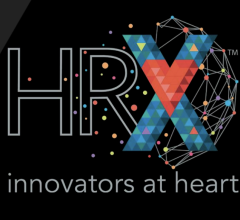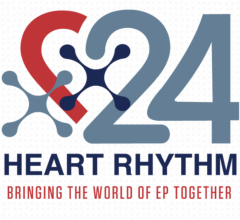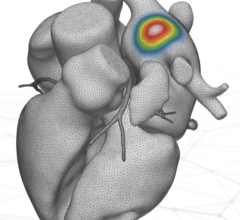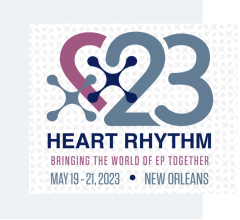
May 25, 2023 — Boston Scientific Corporation announced data supporting use of the company's key electrophysiology and cardiac rhythm management therapies, and the WATCHMAN FLX Left Atrial Appendage Closure (LAAC) Device. All data were presented at Heart Rhythm 2023, the annual meeting of the Heart Rhythm Society, held in New Orleans from May 19-21.
Real-world outcomes from the EU-PORIA registry of the FARAPULSE Pulsed Field Ablation (PFA) System
Real-world outcomes from the multi-center EU-PORIA registry were highlighted in a late-breaking data presentation, further demonstrating the safety, efficacy and learning curve characteristics of the FARAPULSE PFA System. The registry data included favorable single procedure success rates, along with efficient procedure times in a broad patient population. More than 1,200 patients with paroxysmal or persistent atrial fibrillation (AF)** were enrolled and treated at seven high-volume European centers.
Key findings from the registry:
- Rates of freedom from recurrence of AF and atrial tachycardia were high at 74.0% per the Kaplan-Meier estimate at a median follow-up of one year. The freedom from recurrence rate was 80.0% in patients with paroxysmal AF and 66.0% in patients with persistent AF.
- Level of physician experience with AF ablation did not impact procedure times or patient outcomes, reinforcing the procedural reproducibility of the FARAPULSE PFA System.
- Data demonstrated a predictable workflow with a median of 58 minutes within an interquartile range of 40 to 87 minutes.
- There was a 1.7% major complication rate and 1.9% minor complication rate with no reported esophageal damage or pulmonary vein stenosis and a single case of sustained phrenic nerve palsy, which was reported in the MANIFEST PF study.
Primary results of the FROZEN-AF IDE trial with the POLARx Cryoablation System
Results from the global, prospective, non-randomized, single-arm FROZEN-AF IDE study of the POLARx Cryoablation System met the safety and effectiveness endpoints of the trial. The study, which examined use of the device for the treatment of patients with paroxysmal, or intermittent atrial fibrillation (AF), included an extension arm for the POLARx FIT Cryoballoon Catheter, a single device capable of enabling 28 and 31mm sizes. The extension arm sub-study also achieved its safety and effectiveness endpoints and included 50 patients who were treated with at least one application of the 31mm cryoballoon and will be followed for 12 months. At the time of data release, patients had undergone six out of a total of 12 months of follow up.
Key findings from the trial:
- The primary safety endpoint of composite acute and chronic primary safety events through 12 months was achieved with an event-free rate of 96.3% at 12 months in the IDE trial and 100% at six months in the extension arm of the study.
- There were no reports of moderate or severe pulmonary vein stenosis, persistent phrenic nerve palsy or esophageal fistulas in either patient cohort.
- The rate of freedom from documented atrial arrhythmias was 79.9% at 12 months in the IDE trial and 88.0% at six months in the extension arm.
Effects of the EMBLEM MRI Subcutaneous Implantable Defibrillator (S-ICD) on tricuspid regurgitation
Data from a secondary analysis of the investigator-sponsored, randomized ATLAS trial compared among nearly 450 patients the severity of tricuspid regurgitation at six months following the implantation of a transvenous implantable cardioverter-defibrillator (TV-ICD) versus the EMBLEM MRI S-ICD. Tricuspid regurgitation is a disease that occurs when the tricuspid valve does not close properly and is a risk factor for heart failure.
Key findings from the analysis:
- At six months, patients in the TV-ICD group were seven times more likely to have worsening tricuspid regurgitation.
- Of those with worsening tricuspid regurgitation, moderate or severe symptoms developed in 6.9% of patients receiving a TV-ICD versus 2.3% of those receiving an S-ICD.
Hybrid strategy for secondary prevention of sudden cardiac death using ventricular tachycardia (VT) ablation and the EMBLEM MRI S-ICD
The prospective, investigator-sponsored VTabl-SICD trial explored among 32 patients the safety and efficacy of a novel hybrid management strategy combining VT ablation with S-ICD implantation in patients who have scar-related VT. Findings from the study suggested that the combination strategy was superior to conventional TV-ICD implantation for the secondary prevention of sudden cardiac death by significantly reducing the need to deliver ICD therapy and avoiding untreated, symptomatic arrhythmias.
- At two years, the rate of delivery of any appropriate ICD therapy was significantly lower in the VTabl-S-ICD group compared to the TV-ICD group.
- There were no cases of untreated symptomatic VT or ventricular fibrillation in the VTabl-S-ICD group.
Notable developments for the WATCHMAN FLX LAAC Device
Data presented from two new sub-analyses of the SURPASS study out of the National Cardiovascular Data Registry (NCDR) LAAO Registry provided insights into real-world treatment strategies with the WATCHMAN FLX LAAC Device. The first analysis assessed outcomes with different post-procedural antithrombotic therapies and demonstrated that patients treated with direct oral anticoagulants (DOAC) alone had the lowest risk of major adverse events in comparison to other drug regimens following the implant. The second analysis demonstrated that concomitant catheter ablation and LAAC with the WATCHMAN FLX device was safe and had similar outcomes when compared to device implantation alone.
In addition, the latest preclinical data for the investigational WATCHMAN FLX Pro LAAC Device demonstrated that its new thromboresistant coating may further reduce the risk of device-related thrombus and result in faster and more uniform tissue coverage on the device at 45 days post implant. The findings were also published in JACC Clinical Electrophysiology.
"The data shared at this year's Heart Rhythm meeting showcases the breadth and depth of our cardiology therapies, which spans from diagnosis to treatment of cardiac disease, and highlights the continued growth of our portfolio," said Kenneth Stein, M.D., senior vice president and global chief medical officer, Boston Scientific. "From preclinical data to real-world surveillance, data demonstrated positive outcomes for our FARAPULSE PFA System, the POLARx Cryoablation System, the EMBLEM S-ICD System as well as our WATCHMAN FLX LAAC device, and is evidence of our commitment to providing physicians with innovative technologies that make a meaningful impact on the lives of patients living with heart disease."
For more information: www.bostonscientific.com
Find more HRS23 conference coverage here
Related WATCHMAN FLX content:
Real-world outcomes from the EU-PORIA registry of the FARAPULSE Pulsed Field Ablation (PFA) System
Late-Breaking Study Results Reinforce Positive Real-World Outcomes with the WATCHMAN FLX LAAC Device
PINNACLE FLX Study of New Watchman FLX LAA Occluder Meets Safety and Efficacy Endpoints
First Comparison of Amulet and Watchman FLX LAA Closure Devices Found Similar Outcomes


 July 30, 2024
July 30, 2024 








